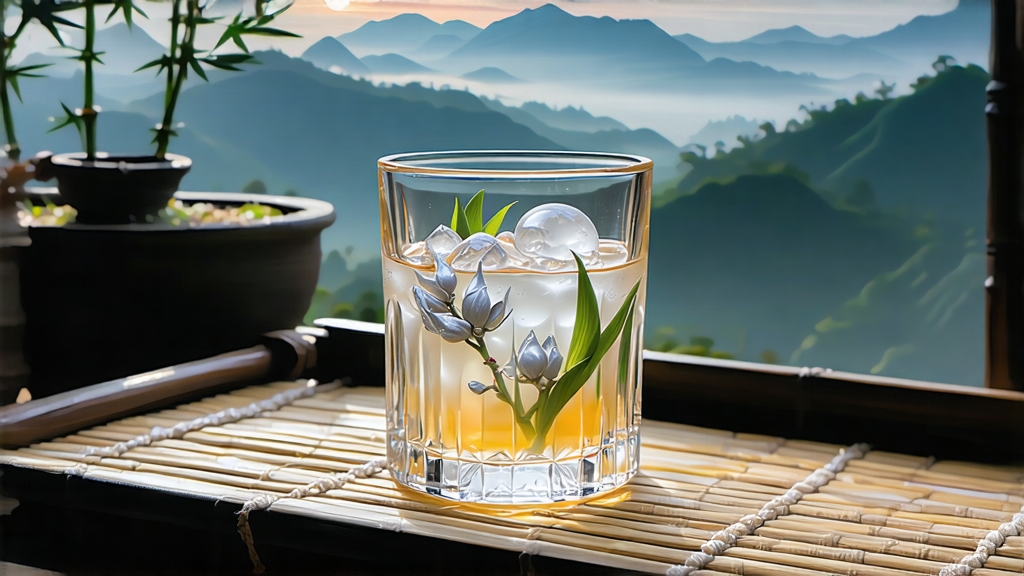
When Chinese tea lovers speak of “white tea,” they are not referring to a pale infusion alone, but to an entire philosophy of restraint. Among the six great families of Camellia sinensis, white tea is the least tempered by human hands, and within that family Bai Hao Yin Zhen—“Silver Needle”—sits at the apex like a quiet monarch. Composed only of unopened buds plucked for a few spring mornings each year, Yin Zhen is tea stripped to its essence: downy, ivory-coloured tips that look more like rare moth antennae than agricultural product. To understand China’s most delicate tea, one must follow the cool April mists of northern Fujian’s Fuding and Zhenghe counties, where the cultivar Fuding Da Bai Hao (“Big White Down”) has evolved extra-thick trichomes that shimmer under moonlight—hence the name “Silver Needle.”
History whispers rather than shouts here. Tang dynasty texts already mention “white cakes” of compressed tea sent from Fujian to the capital, but the first unambiguous record of bud-only white tea appears in the 1796 county gazette of Fuding, when tea makers, desperate to preserve the fragrance of buds damaged by late frost, abandoned roasting and simply sun-dried them. The new tea’s subtlety delighted the Jiaqing Emperor; by the late 1800s Yin Zhen was traveling down the Min River to Fuzhou’s foreign hongs, then onward to London and St Petersburg where Edwardian ladies prized its “champagne of teas” nuance. Yet unlike pu-erh or Da Hong Pao, Silver Needle never acquired swaggering legends; its story remains a sequence of quiet dawns, bamboo trays, and women who still pluck by touch so as not to bruise the down.
The modern classification is rigorously simple: genuine Bai Hao Yin Zhen must be 100 % buds, picked only between Qing Ming and Gu Yu—roughly April 4–20—when the bud reaches 2.5–3 cm but the first leaf has not yet unfurled. After picking, the buds are spread on bamboo screens called “water sieves” and left to wither for 36–48 hours, depending on humidity. No pan-firing, no rolling, no shaking; only the slow surrender of moisture to sun and breeze. At night the trays are stacked in ventilated sheds where the temperature drops, encouraging enzymatic transformation that creates Yin Zhen’s signature cocoa-and-melon aroma. On the second morning the tea is gently baked for minutes, not hours, at 40 °C, just enough to reduce moisture to 5 % while preserving the silvery hairs. The finished buds resemble miniature sceptres: pale jade shafts capped with platinum, each weighing scarcely 0.05 g yet containing 200–300 volatile compounds waiting to bloom in hot water.
Terroir matters as much as technique. Fuding’s red granite soils are acidic and well-drained; the coastal East China Sea brings morning fog that filters sunlight into a softbox, slowing photosynthesis and concentrating amino acids. Zhenghe, 150 km inland, sits 200 m higher; cooler nights lengthen withering, yielding a slightly darker bud and deeper, orchid-like fragrance. Purists debate which county produces the “true” Yin Zhen, but cup character is more vintage-driven than postcode-driven: a dry spring will give sharper, lime-zest notes, while a misty one yields cream and honeydew. What never varies is the tactile pleasure of rolling a dried bud between finger and thumb; the down lifts like static electricity, a reminder that this is leaf hair, not leaf blade.
Western brewers often murder Silver Needle with boiling water, then complain it tastes like hot water. The Chinese gongfu approach is kinder: 4 g of buds—about thirty—for a 150 ml gai-lid vessel, water at 80 °C, first infusion 45 s. The buds stand upright like tiny rockets, trichomes shimmering before slowly sinking. Liquor the colour of pale chardonnay releases aromas of fresh lychee, steamed rice, and a whisper of sage. Second infusion, 30 s, brings a richer body, a texture like whole milk sliding across the tongue, finishing with a cucumber coolness. By the fifth infusion the buds have opened into miniature lotus shapes, flavour shifting to